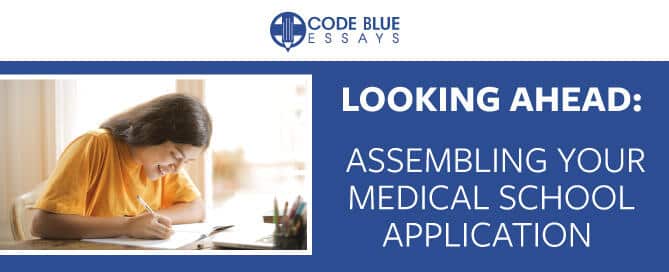Looking Ahead: Assembling Your Medical School Application
0 Comments

December 7, 2021 in Admissions, Medical School, Medical School Application, Medical School Tips
Part 1: Extracurriculars
For students looking to apply to medical school in 2022-2023, now is a perfect time to step back and think about how you’ll make sure your application is truly exceptional. One portion you should focus on fine-tuning during this time is how your application will reflect your body of volunteer experience as you have prepared for medical school.
Clinical Experience
Traditionally, medical school applicants should have between 100-150 hours of clinical experience. Recently, students have seen chances to obtain experience disappear because of COVID restrictions in facilities. Now, students need to make the most of the opportunities they can find to gain the hours they missed out on earlier in the pandemic. When it comes to clinical experience, medical schools value quality over quantity. Patient interaction is paramount! Some common types of clinical experiences include medical scribing, volunteering to work directly with patients at a healthcare facility, or even paid positions, like working as a phlebotomist or EMT. Also, it’s better to develop lengthier relationships with one or two clinics than to work at many clinics for brief periods.
Of the volunteering you’ll do during your undergraduate years, medical schools consider clinical experience to be the most important. In addition to listing your clinical experience on your Curriculum Vitae and including it on the basic application, you will likely be asked questions about it for secondary application essays, and then almost certainly again in interviews. Clinical experience is not only helpful during the medical school admissions process, but it enhances your overall medical education, making you a better future doctor. Medical schools want students with clinical experience because it is so effective in preparing a prospective doctor for life in the field.
Another way to gain valuable clinical experience is through shadowing a physician. While it most often occurs in a clinical setting, shadowing is more passive than the patient interaction offered during the clinical experiences referenced previously. Shadowing involves observing a physician in his or her usual routine; a student typically asks questions and learns directly from the physician without actually performing any clinic-related tasks. The AAMC describes shadowing as follows: “it exposes you to patient care in a clinical setting and gives you an idea of the day-to-day demands of a medical career.”
Non-clinical Volunteering
Non-clinical volunteering is work a student chooses to do in their community outside of a medical setting. Premedfaq.com recommends 100-150 hours of non-clinical volunteering or even holding a non-clinical job during undergraduate studies. Once again, quality trumps quantity. With non-clinical volunteer hours, medical schools want to see your commitment level to a cause benefitting your community. Longer-term commitments are more attractive, but you can also add hours quickly with meaningful service projects on a larger scale.
Research
Finally, medical research is another opportunity to shine in your medical school application. Medical research is not usually required for admission, but it can act as an attractive feature for applicants who have it. Some medical schools are known for their research, so if you aim to gain admission in one of those, make sure you seek a research position. If your research team gets published, your prospects improve even further beyond the boost of having the experience itself. However, if you opt not to pursue research positions as an undergraduate, you should have a well-thought-out response ready if you are asked about it during an interview.
With all extracurriculars, your objective should be to assess where you currently stand and fill any holes that need filling afterward. Once you’re comfortable with the experience you have or anticipate having, think about how you’ll best present those experiences in writing. Code Blue Essays is here to help ensure that your application is in prime condition when it’s time to click “submit.” In the meantime, check out our timeline for the medical school application process. Code Blue Essays has the resources you need throughout the admission process!